
A boiler is a closed vessel in which fluid is heated. The fluid does not necessarily boil. The heated or vaporized fluid exits the boiler for use in various processes or heating applications, including water heating, central heating, boiler-based power generation, cooking, and sanitation.

Under the Whyte notation for the classification of steam locomotives, 4-6-2 represents the wheel arrangement of four leading wheels on two axles, six powered and coupled driving wheels on three axles and two trailing wheels on one axle. The 4-6-2 locomotive became almost globally known as a Pacific type after a locomotive built by the Baldwin Locomotive Works in Philadelphia was shipped across the Pacific Ocean to New Zealand.
A superheater is a device used to convert saturated steam or wet steam into superheated steam or dry steam. Superheated steam is used in steam turbines for electricity generation, in some steam engines, and in processes such as steam reforming. There are three types of superheaters: radiant, convection, and separately fired. A superheater can vary in size from a few tens of feet to several hundred feet.
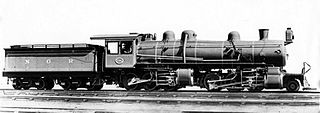
Under the Whyte notation for the classification of steam locomotives by wheel arrangement, 2-6-6-0 is a locomotive with one pair of unpowered leading wheels, followed by two sets of three pairs of powered driving wheels and no trailing wheels. The wheel arrangement was principally used on Mallet-type articulated locomotives. Some tank locomotive examples were also built, for which various suffixes to indicate the type of tank would be added to the wheel arrangement, for example 2-6-6-0T for an engine with side-tanks.

The Franco–Crosti boiler is a type of boiler used for steam locomotives. It was designed in the 1930s by Attilio Franco and Dr Piero Crosti. The main difference between it and conventional feedwater heaters widely used on the continent is that the Franco-Crosti boiler uses both exhaust steam and exhaust gases from the firebox. Conventional feedwater heaters only use exhaust steam.
Boilers for generating steam or hot water have been designed in countless shapes, sizes and configurations. An extensive terminology has evolved to describe their common features. This glossary provides definitions for these terms.
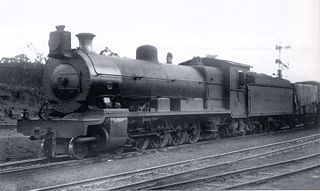
The South African Railways Class 14B 4-8-2 of 1915 was a steam locomotive.
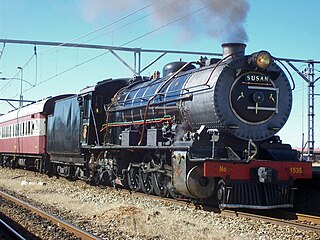
The South African Railways Class 12A 4-8-2 of 1919 was a steam locomotive.

The South African Railways Class NG G11 2-6-0+0-6-2 of 1919 is a class of narrow gauge steam locomotives.

The South African Railways Class 10C 4-6-2 of 1910 was a steam locomotive from the pre-Union era in Transvaal.
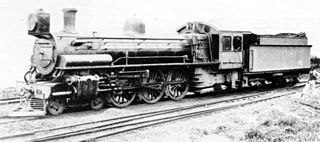
The South African Railways Class 10B 4-6-2 of 1910 was a steam locomotive from the pre-Union era in Transvaal.

The South African Railways Class 10A 4-6-2 of 1910 was a steam locomotive from the pre-Union era in Transvaal.

The South African Railways Class 8 4-8-0 of 1902 was a steam locomotive from the pre-Union era in the Cape of Good Hope.

The South African Railways Class 6L 4-6-0 of 1904 was a steam locomotive from the pre-Union era in the Cape of Good Hope.

The Lancashire and Yorkshire Railway Class 32 was a small class of 0-8-2T steam locomotives, intended for heavy shunting and banking duties.

The NWE No. 21II, later DR 99 6001 is a narrow gauge steam locomotive that was built in 1939 for a track gauge of one metre and is still on duty with the Harz Narrow Gauge Railways (HSB) today.
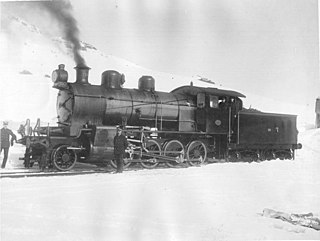
The NSB Type 22 steam locomotives were built between 1906 and 1908 by Thunes mekaniske verksted and Hamar Jernstøberi for the Norges Statsbaner (NSB), the state railway company in Norway.
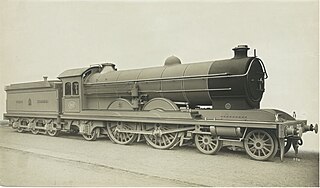
The NER Class Z was an Atlantic class of locomotives designed by Vincent Raven. It was introduced in 1911.

The NSB Type 32 was built between 1915 and 1921 by Baldwin Locomotive Works, the Vagn- & Maskinfabriksaktiebolaget Falun and Hamar Jernstøberi for the Norges Statsbaner (NSB), the state railway company in Norway. The Norsk Hoved-Jernbane (NHJ) also received two locomotives.
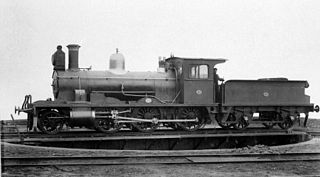
The NSB Type 11 were locomotives with the wheel arrangement 1'C (2-6-0), which were built between 1891 and 1896 by Dübs and Company in Glasgow and Nylands mekaniske verksted in Oslo in twelve examples in different versions for Norwegian state railway. Three locomotives were rebuilt into the Type 15d and Type 15h series. In the early days, its main use was on goods trains.




























